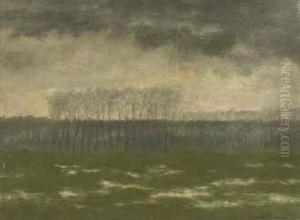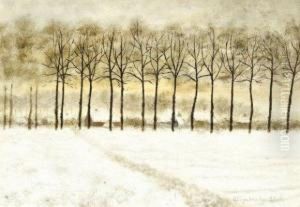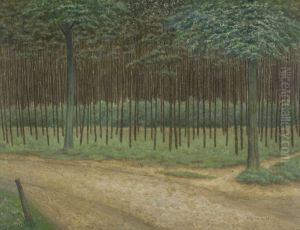Albijn Van Den Abeele Paintings
Albijn Van Den Abeele, born on November 25, 1835, in Sint-Martens-Latem, Belgium, was a pivotal figure in the world of Belgian art, especially known for his influence on the Latem School, a group of artists who played a significant role in the development of expressionism and symbolism in Belgium. His contributions, however, were not limited to his artistic creations; Van Den Abeele was also recognized for his role as a mentor and patron to younger artists who congregated in the rural village of Sint-Martens-Latem, seeking a return to nature and simplicity as a response to the rapid industrialization of Belgium at the time.
Van Den Abeele's early life was steeped in the pastoral tranquility of the Belgian countryside, which deeply influenced his artistic vision. Initially, he embarked on a career in local administration, serving as the mayor of Sint-Martens-Latem. His true passion, however, lay in the arts, and he was largely self-taught as a painter. His subjects were often the landscapes and peasant life around him, reflecting a romanticized vision of rural existence that resonated with the burgeoning artistic movement that sought to escape the alienation of modern life.
As the founder of the Latem School, Van Den Abeele's home became a hub for artists, writers, and intellectuals, drawn by his vision of an art that was deeply connected to nature and the spiritual aspects of human existence. His influence extended beyond his own artistic practice to encompass a nurturing of Belgian expressionism and symbolism, guiding the likes of Gustave Van de Woestyne and Valerius De Saedeleer, among others. These artists would go on to define a significant period in Belgian art history, marked by a focus on mysticism, rural life, and a deep, emotional response to the natural world.
Van Den Abeele's work, while not as widely recognized internationally as some of his contemporaries, remains an essential part of the narrative of Belgian art. He continued to paint and inspire others until his death on January 8, 1918. Today, his legacy is preserved in museums and collections throughout Belgium, where his efforts to capture the essence of the Flemish landscape and the spirit of his times continue to be celebrated.


